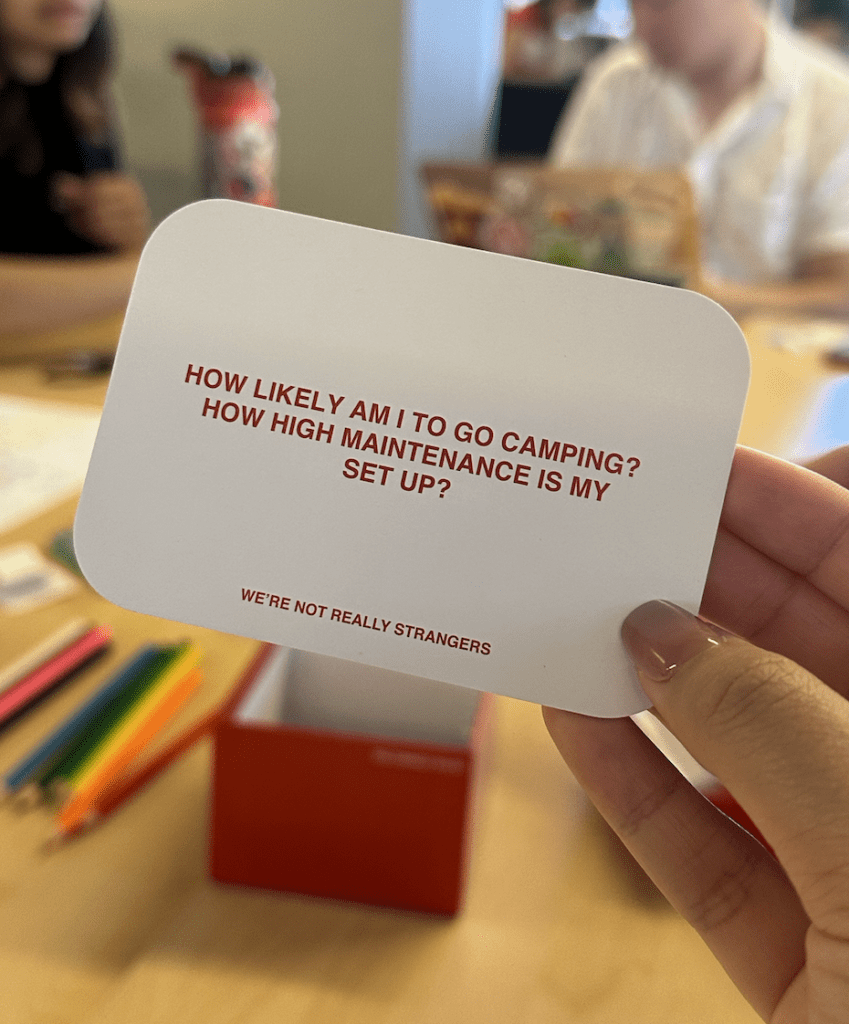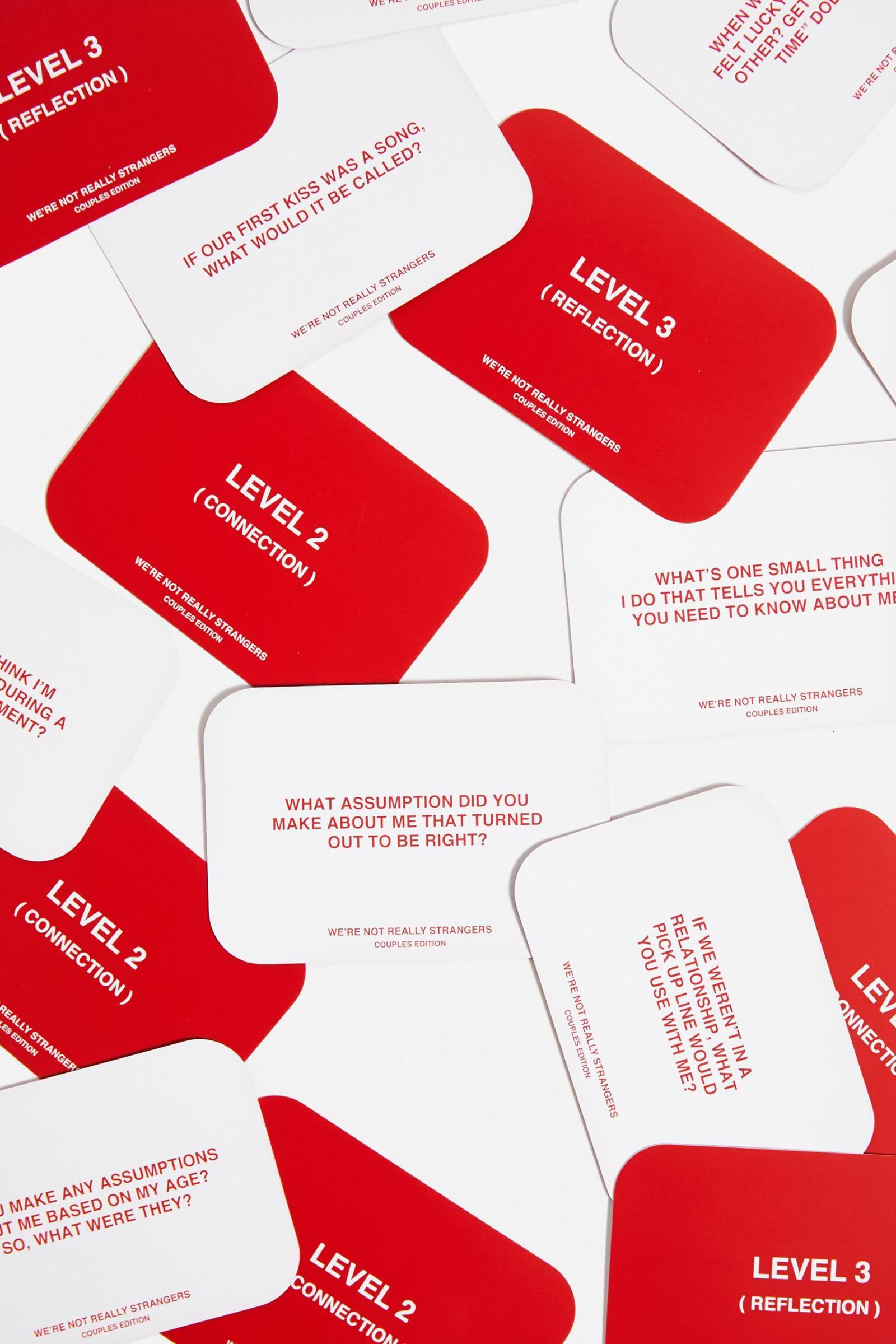For this week’s critical play, I chose We’re Not Really Strangers (WNRS), a card game created by Koreen Odiney. The game is aimed at adults. In particular, it seems to be aimed at those who don’t know each other well yet. I played the group rules rather than the two player rules.
I chose to play this game because I was looking for a card game with finite replay-ability and a similar structure to my P1 game, which, just like WNRS, has one player be the focus of each round.
In particular, I wanted to look at how WNRS addresses the fact that it has a limited number of cards, meaning that eventually, a player would have read all of the prompt cards and learned the answers for the person they’re playing with. I believe that this lack of replay-ability is my main concern with our current P1 game design, and I went into this process looking for either inspiration on solutions or an answer as to whether replay-ability is as important as I thought it was.
I realized that WNRS addresses this issue by making the answers to each prompt differ based on the person answering them. So, you may eventually exhaust the game by playing with a set group of friends, but you can always take the game to a new group and play it all over again. In this way, WNRS uses it’s players as on of the game’s components.
This is in contrast to my P1 game, where each claim card can only ever be true or false regardless of who is reading the card. I’m interested in exploring how I could take example from WRNS to address this. Perhaps it would be possible to base the active player’s win conditions on how other players react to the fact. However, I don’t think this method would be particularly applicable to our P1 game because it is focusing on trivia.
The other way that WNRS addresses it’s limited number of cards, then, is by having a large abundance of cards and only using a few per game. For example, each player only draws two cards from each of the three decks through the entire course of the game. This makes the game replay able even with the same players, as long as you set the used cards aside. This is similar to our P1 game, in which we hope to have a much larger number of cards than can be played in one game, hopefully allowing for at least half a dozen games to be played before the players run out of cards.

Secondly, I noticed that WNRS uses categorized cards to create a sense of progression. This adds a bit of fun in the form of narrative, where you learn deeper things about a person as the game goes on. This is in contrast to the current iteration of our P1 game, which uses one deck of claim cards. I believe it would be a good idea to separate our claim cards into difficulty levels, which might allow for players of different ages and educations to enjoy the game while also creating a sense of progression and thus fun in the form of a rudimentary narrative.
Finally, I noticed a start contrast between WNRS and our P1 game in that WNRS isn’t a particularly competitive game. In fact, there really is no formal objective in the game for any of the players. When playing the game, my group felt that this lack of objective was a bit disorienting, and we could easily lose interest midway through as the lack of objective made it hard to feel like we were progressing. WNRS cleverly uses progression through the three decks to alleviate this feeling, but the game is not really suited toward a player of the achiever type. Our P1 game, in contrast, introduces clear objectives in the form of points, which can easily be seen by other players and thus provide an incentive toward competition. Our ideal player, then, would be someone who is the achiever type. Because of this, many of our design choices will differ from WNRS even if the basic structure stays the same, such as the choice to give players points for correct answers while WNRS simply leaves correct and incorrect answers as having the same outcome. This is because we are attempting to create fun in the form of challenge, while WNRS is not. Adding and taking away just a few mechanics from an otherwise quite similar game structure really changes the aesthetic a lot.
Overall, I’m glad I finally picked up WNRS after hearing so much about it. The structure of the game is remarkably similar to my P1 game, though it manages to produce a very different experience.




